Farsley WW1 airfield remembered
This afternoon, the two year six classes held a very special event – a dedication ceremony for the Farsley Airfield plaque provided by the Airfields of Britain Conservation Trust.
The children ran the entire event: welcoming visitors, sharing facts about the airfield, reciting poetry and unveiling the plaque. Mr Harris also joined us to share his thoughts about this exciting part of Farfield’s past.
We were joined by a photographer from the Yorkshire Evening Post and a journalist from The Squeaker – a local magazine.
This half-term, we have been fascinated by our history work. Together, we have been on a voyage of discovery: researching, sharing and presenting interesting facts about the First World War and Farsley’s role in it. The personal link to the Farsley Airfield has brought our learning to life!
Thank you to the parents and carers who were able to join us this afternoon. For those of you who were unable to attend, we are hoping to create a video of the facts and poetry shared today.
Thank you to John Proctor, Farsley’s local historian, for giving each Year 6 child a copy of “We Will Remember” from The Squeaker. They were thrilled to receive them today and have taken them home to share with their families.
For your information, here is the script from today’s ceremony. It was written from all of the children’s work in their Learning Logs and History books.
Welcome to Farsley Farfield Primary School. 100 years ago, Europe was in the middle of the First World War. Today we will spend time remembering all the people who took part in the First World War and, in particular, the pilots who flew over Leeds to keep it safe.
Last summer, Mr Harris was contacted by the Airfields of Britain Conservation Trust. They told him there had been a First World War airfield on the site of our school grounds from April 1916 to March 1917 which they would like to acknowledge with a plaque. At that time, there would have been no school, no housing estate and no office buildings, just flat fields on top of a hill – a good location for planes to take off and land.
The First World War was the first major battle where airplanes and other flying machines were used. The Germans used huge airships called Zeppelins to drop bombs on their enemies. These Zeppelins were stationed in Belgium and could reach the east coast of England. At first, Norfolk was the target but then British leaders became concerned that Leeds and Hull would soon come under attack. A number of temporary airfields were established.
In Leeds, airfields in Farsley, Seacroft and Middleton were used by the 33rd and 76th squadrons of the Royal Flying Corps. These pilots flew B.E. 2 and B.E. 12 bi-planes. Their role was home defense through air patrols. They needed to protect the city of Leeds from German Zeppelin bombing raids. These airfields were used for emergency landings and refueling.
Near where we are standing now, there would have been a long, grass landing strip; a wind-sock to tell the pilots the wind direction and some cans of fuel. If necessary, pilots could land, refuel and take off again to continue their surveillance.
During the first world war, Leeds was victim to only one Zeppelin bomb attack. This was in north Leeds near Harewood. The Zeppelin’s mission was to drop bombs on the munitions factory at Barnbow near Leeds and on Kirkstall Forge but it aborted its mission when it came under fire and ditched its incendiary bombs. There were no fatalities and little damage.
Royal Flying Corps squadron 33 were not in Farsley for very long. By the autumn of 1916, they had moved to their main base in Lincolnshire where the squadron still remains today. The 76th squadron then took over the airfield for a short period. Farsley airfield was soon closed because of food shortages in Leeds. The land was needed for farming. Zeppelin raids continued in other parts of the country until the final bombing raid on the 5th of August 1918.
Following the war, there was some debate about where to locate the Leeds Bradford Airport. This Farsley site was considered but the decision was made to go further north to Yeadon where the airport is located today.
Our research into the Farsley Airfield has been very challenging. Very little is known about the airfield as it was only here for such a short time and must have been very secretive during the war.
We are very proud of the part Farsley played in the protection of Leeds during the First World War and will always remember the importance of this piece of land at Farsley Farfield Primary School.
Thank you for coming today. We hope you have learned a lot about the Farsley Airfield and will take a moment to remember all who served in the First World War every time you pass the plaque. Good afternoon.
Recent Posts
Recent Comments
- Loraine Lambert on Headteacher blog 28th March 2024
- Tanya on Year 1 – 28.03.24
- Kate on Year 1 – 22.03.24
- Anisha on This week in Nursery
- Ethan Lacey on Pig names


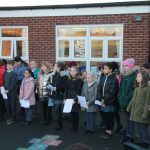
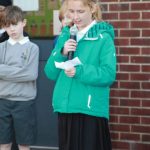
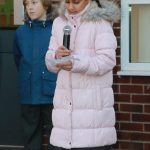

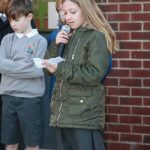
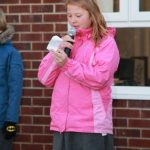
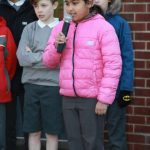

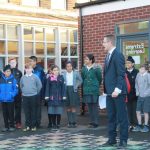
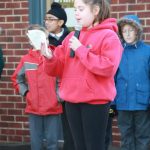
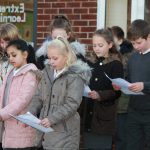
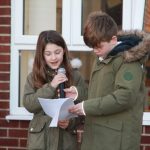
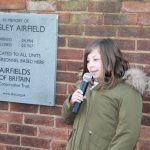
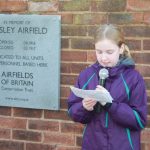
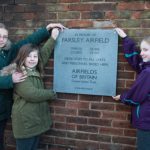

Leave a Reply